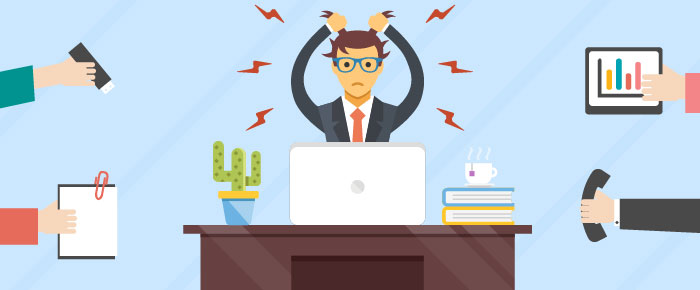Managing Stress and Anxiety Is As Easy As ABC

A busy mind. Tight shoulders. Cluttered thinking. Butterflies in the stomach. The experience of stress is all too familiar to patients and professionals alike. That said, we can all acknowledge that a little bit of stress in our lives is a good thing. Stress motivates us, signals importance, and allocates our mental and physical resources for adequate and timely task completion.
Prolonged and severe stress, however, can negatively interfere with our mental and physical wellbeing. Often, this happens when the demands in our lives (work, family, school) start to outweigh our current ability to cope with these demands. This can occur over time or all of the sudden, like after an injury. Either way, reducing stress involves removing the demands from our lives (which may or may not be possible) or increasing our coping resources. Sounds hard? It’s not really – it’s as easy as ABC.
A. Accept
Perception is reality. Research has shown that it’s not so much the demand that causes stress, but our perception of the demand. As such, acceptance teaches us to learn to roll with the ups and downs of life. By accepting our stress, realizing that it is not here to harm us, and knowing that it is temporary, we can decrease the intensity of anxiety, making it much more manageable.1
So, when you’re feeling anxious or stressed, appreciate where it’s coming from, and treat it as a friend. A friend won’t hurt you, neither will stress.
B. Breathe
The power of deep breathing helps both the mental and physical aspects of stress. Breathing effectively relaxes the muscles and calms the mind, enabling us to think more positively, and clearly about the task. No, it doesn’t magically take the demand away, but it centers and primes us for a more effective resolution.2
Don’t believe me? Just try it. Take about 5 minutes, find a quiet place, and simply focus on breathing. If you find yourself getting distracted, that’s OK. Simply return your focus to your breaths.
- Inhale through the nose into your belly and fill the lungs from the bottom up.
- Hold that breath in the body for a brief moment.
- Slowly exhale through the mouth releasing all the tension and stress.
- Rinse and repeat until you feel like you are ready to take on the world.
C. Choose Your Focus
After you’ve befriended your anxiety and calmed your mind and body, it is time to direct your focus to the situation at hand. You might want to say and focus on something positive that further builds your confidence or readies you for action. You might want to focus on a specific small action. So, you may consider developing a tangible trigger to remind you of this, which will help to allocate your mental and physical resources towards that behavior.3
Some tips:
- Identify What’s Important Now (W.I.N). Not all tasks are created equal and have the same deadlines. Prioritize then pursue!
- Control the controllables. Often we get flustered by things we have no direct control over. In the words of the Frozen Ice Princess, “Let it go, let it go!”
D. Do It.
I guess there was one more. Call it a bonus! At the end of the day, after we’ve appreciated our stress, relaxed ourselves with breath, and identified next steps, we are left to what? You nailed it: just do it! Thanks Nike, and thank you stress.
- Grossman, P., et al. (2004). Mindfulness-based stress reduction and health benefits. A meta-analysis. Journal of Psychosomatic Research, 57, 35-43.
- Benson, H. (2009). The relaxation Response. Harper Collins Publishing. New York, NY.
- Murphy, S. (2012). The Oxford handbook of sport and performance psychology. New York, NY: Oxford University Press.









